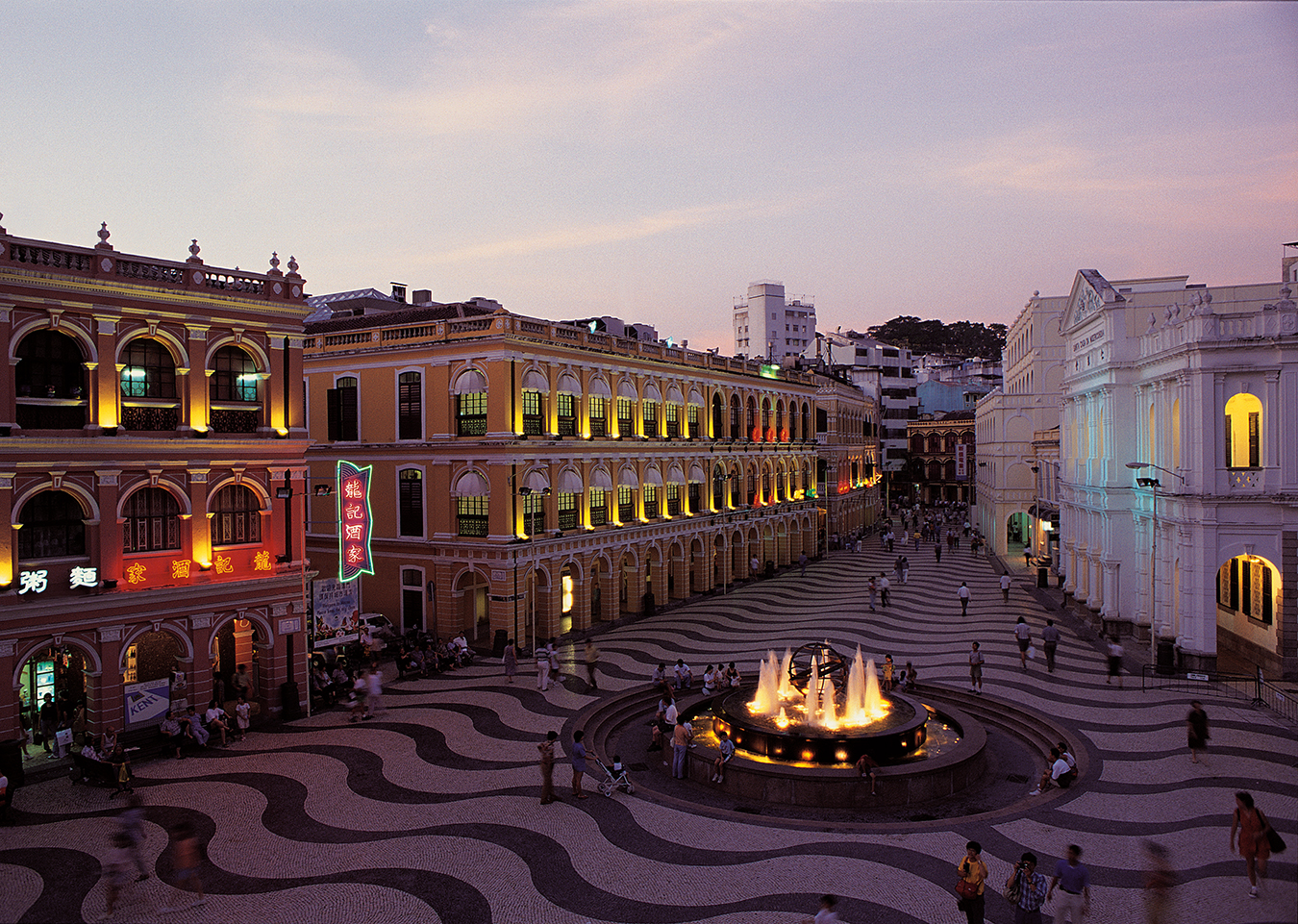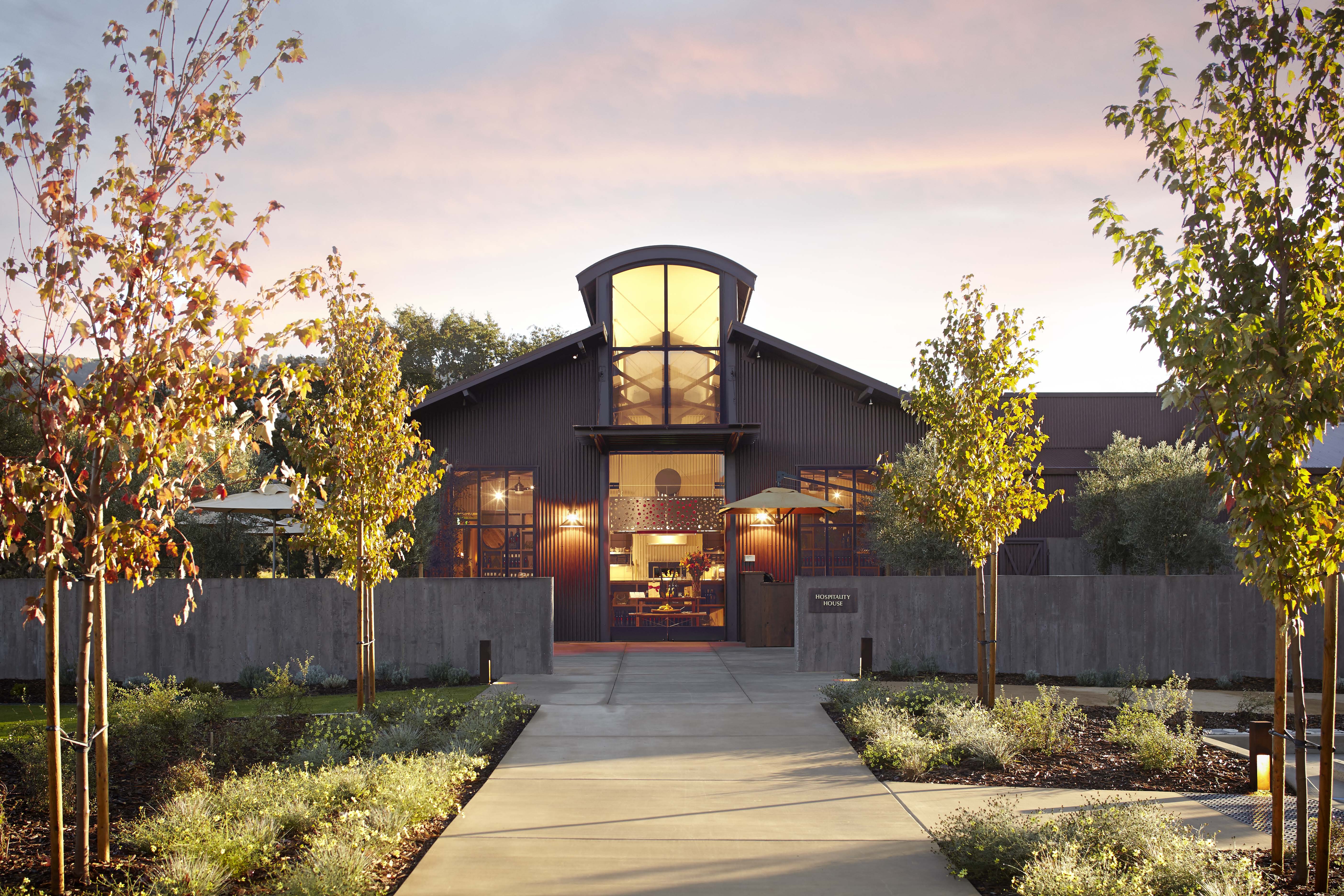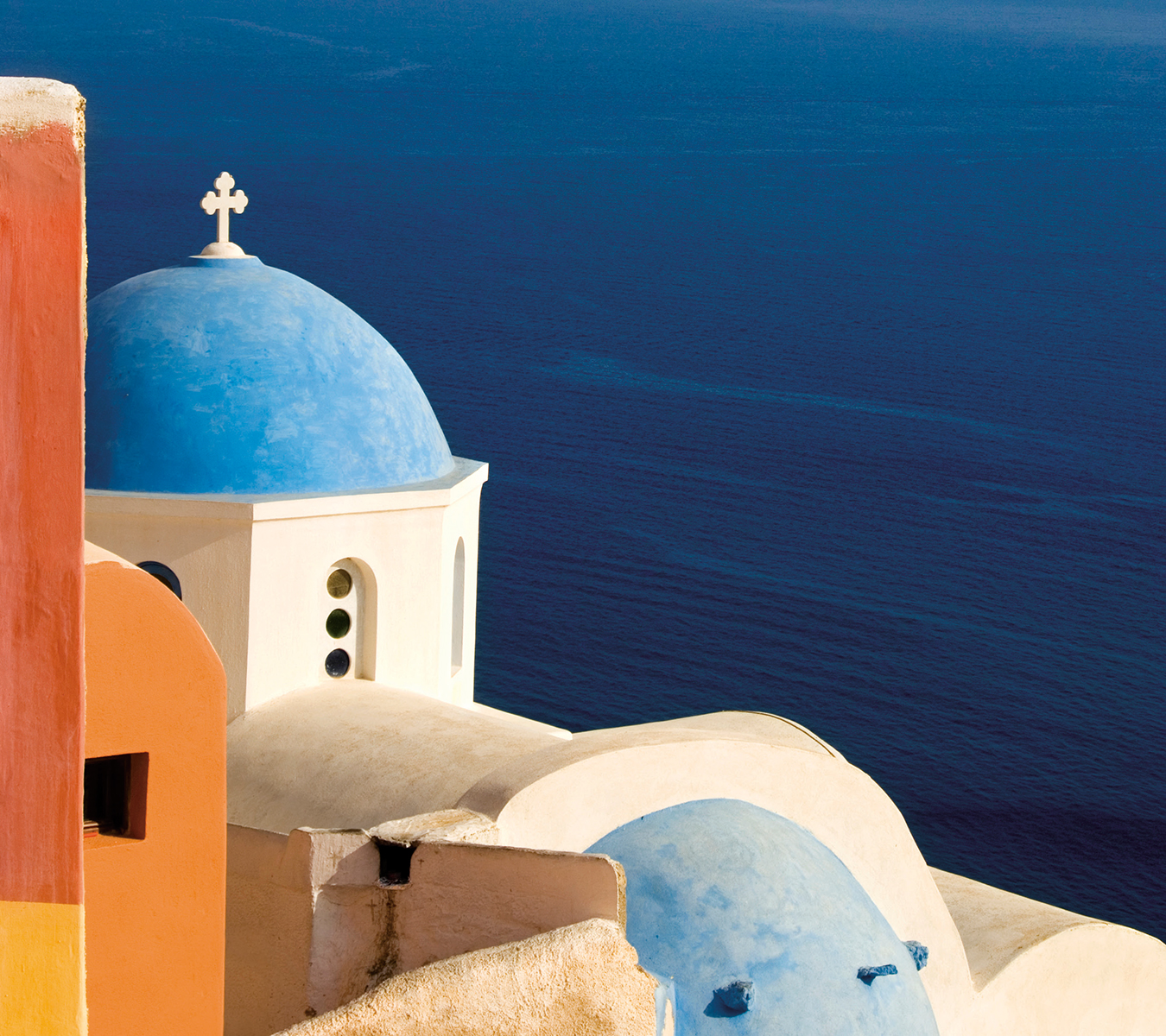-
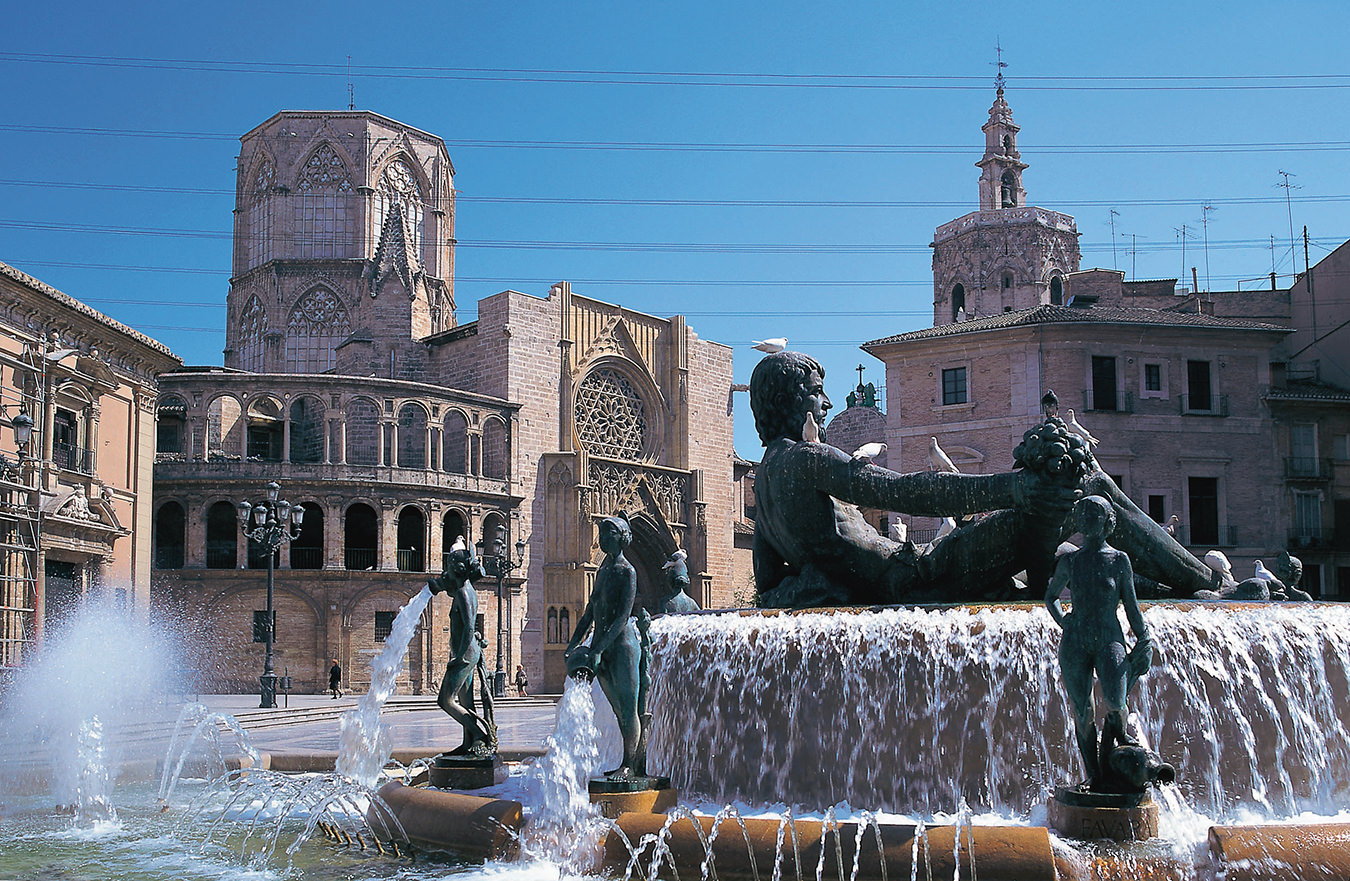
Valencia’s Plaza de la Virgen framed by the Valencia Cathedral.
Photo provided by TourSpain. -
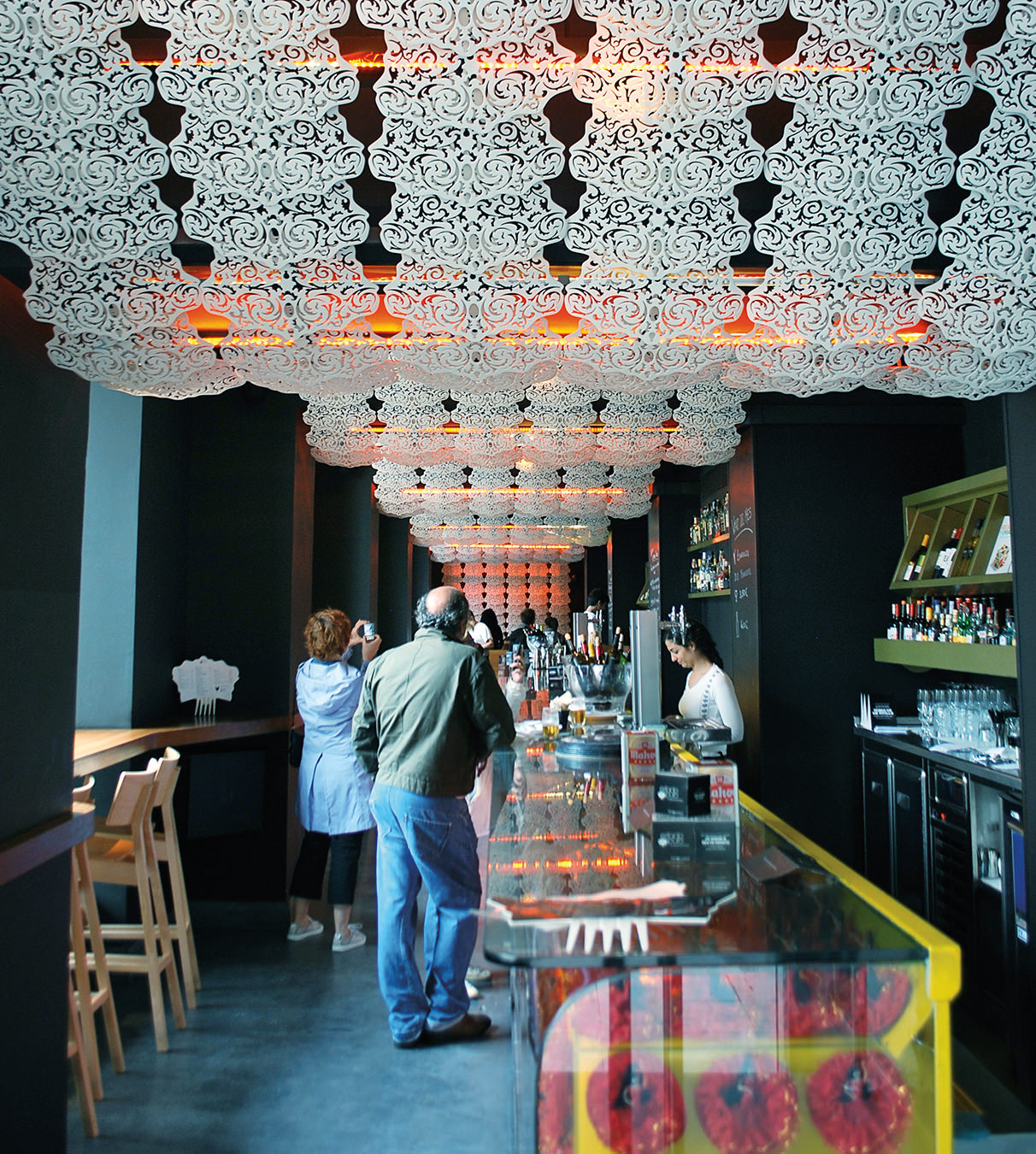
Estado Puro, chef Paco Roncero’s restaurant, in Plaza del Ángel, Madrid. Photo by Katie Nanton.
-
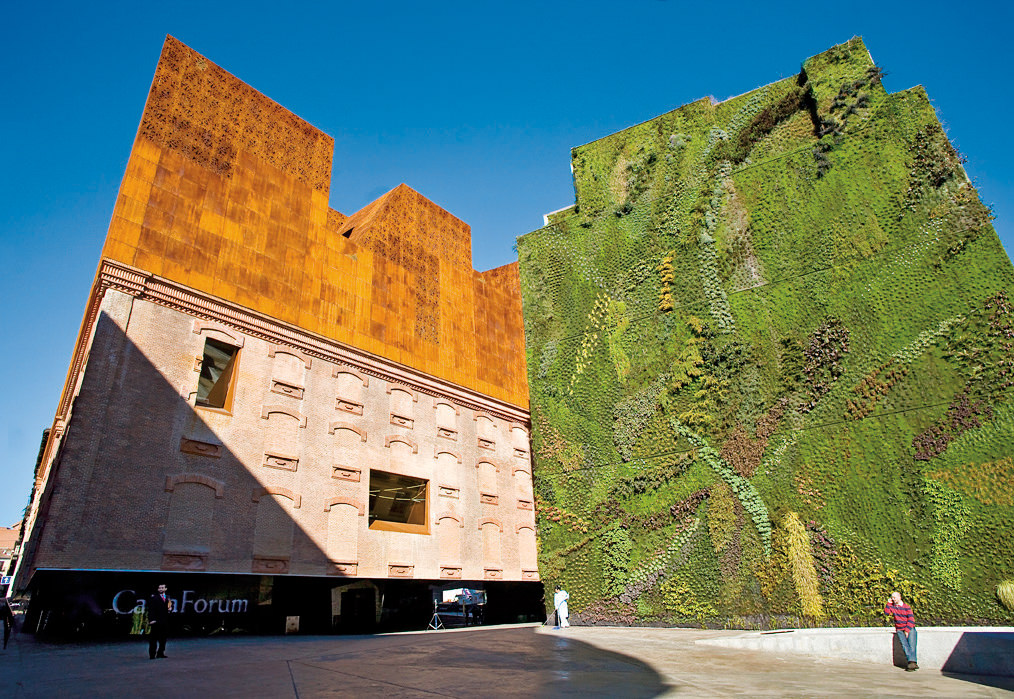
CaixaForum Madrid, the city’s arts and cultural centre.
Photo provided by Madrid Visitors & Convention Bureau. -
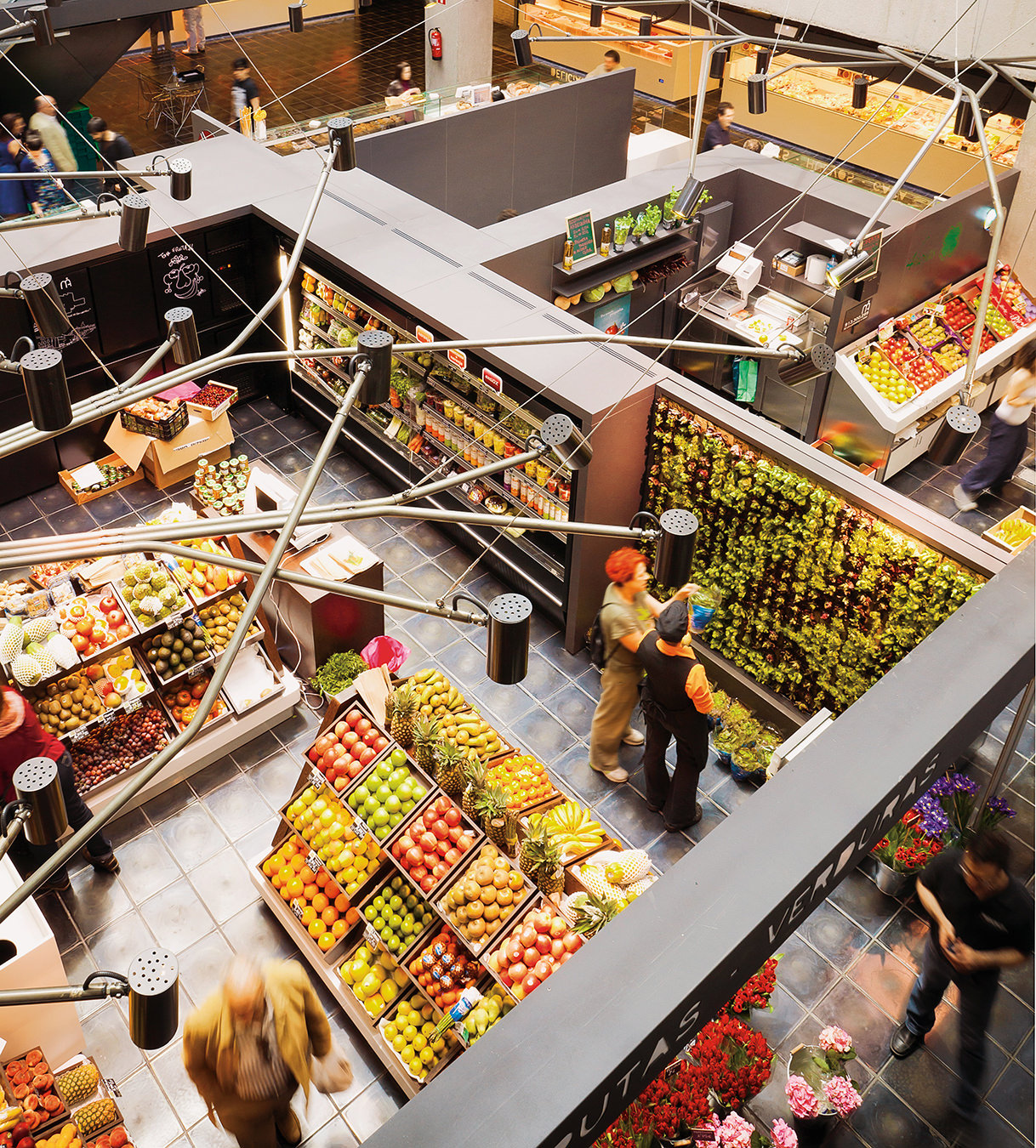
Madrid’s Mercado de San Antón.
Photo provided by Madrid Visitors & Convention Bureau. -

The Crystal Palace in Madrid’s Buen Retiro Park was originally built in 1887
and today is used for art exhibitions. Photo by Katie Nanton.
Valencia and Madrid
Architecture and aperitifs.
“Wine,” wrote Ernest Hemingway, “is one of the most civilized things in the world.” He spent a good portion of four decades, from the 1920s through the ’50s, living and writing in Spain; it’s easy to guess the origin of his choice elixirs.
A glass of red from the south-central Valdepeñas region (his favourite) could have spurred those very words; perhaps it was a carafe of sparkling cava or a tumbler of southern Cádiz sherry. Whatever Hemingway was drinking, I’m channelling his sentiment while sipping a cocktail mixed with cava in Valencia, the country’s third-largest city.
The drink: Agua de Valencia, a mimosa-like blend of vodka, sugar, cava, and orange juice (squeezed from Valencia oranges), quickly mixed and slowly poured by the steady hand of proprietor Marc Insanally at Café de Las Horas on historic Conde de Almodóvar. The impeccably dressed entrepreneur relocated to the city 18 years ago from Guyana, by way of London. He opened up a café in order to fill a void he saw in the city’s social fabric.
“When I arrived in Valencia, there was nowhere to read, nowhere to gather and sip cocktails, have tea and coffee,” he says, straightening a pink kerchief around his neck. So he built his dream, painting the café ceiling blue with gold stars and adorning the space with ornate, gold-framed artworks and chandeliers. He hand-picked tiles, broke them himself, and pieced together mosaics on the walls. But it is more neo-baroque than Gaudí; a bohemian melting pot of a Parisian café meets English tearoom meets Spanish literary café, with a shot of American cocktail bar. The result is a thoughtful spectacle.
The business used to bustle and thrive and pour out onto the streets with visitors and locals alike. Then, 2008 happened: Spain was knocked out of the ring during that global recession boxing match, and millions of jobs were lost. “We haven’t broken yet,” Insanally says, gesturing to the few filled restaurant seats around him, “but we’re certainly bending in the crunch.”
The tenuous times have reached far and wide across Spain, Europe’s fourth-largest euro economy, which last year calculated an unemployment rate of 26 per cent and endured a 1.4 per cent drop in GDP from 2011. There is hope, however, as a fresh crop of tenacious entrepreneurs are taking advantage of low rental prices, buoyed by a slow but steady increase in both public and private sector support.
At Café de Las Horas, Insanally presents his own version of café culture to keep business flowing, which includes live music, philosophy talks, tarot readings, film showings, Scrabble nights, and more. “This Saturday is corset night,” he says, laughing. “Our line-up is kind of schizophrenic, but it’s far from schizophrenia.”
Since 2009, Spain’s cultural landscape has shifted as swiftly as the economy. Last year, animal activists rejoiced when bullfighting was banned in Catalonia and matadors officially hung up their red capes. On the restaurant circuit, a red flag flew up when that same region’s famed elBulli shuttered its world-famous dining room for good. (There are rumours of it re-opening in 2014.) But economics, elBulli, and bulls aside, there’s no better time to visit Spain. Restaurant patrons may be eating out a little less often, but, during my recent visit to Valencia, the pinchos (small tapas bites, usually spiked with a toothpick) are heartily plated everywhere and the wine flows. The welcome is warm; it feels more like a familial hug than a handshake.
If Agua de Valencia is the drink of choice in town, traditional paella is the meal. The region is known as the birthplace of the dish. As I further investigate the paella of the region, a rainy walk through the historic centre of town takes me past the storied Plaza de la Virgen and through the Valencia Cathedral. It necessitates a visit, not only for the two Francisco Goya paintings that hang within, but moreso because it is said to house the Holy Grail. The ancient relic is on display for all to see, its tiny form sitting behind thick protective glass in a side-chapel of the church. Exiting to the shops outside, with paella on the mind, I succumb to stalls of postcards featuring the “World’s Biggest Paella” (it fed 110,000 people).
A short drive outside of town, alongside but teasingly out of sight from the Mediterranean Sea, is a pristine lagoon and a 21,120-hectare natural park called Albufera. The vast wetland is surrounded by 15,000 hectares of the country’s most productive rice paddies. Here, grains of rice garner the same respect as wine grapes, with an official designation: Denominación de Origen Arroz de Valencia. A grey sky looms, winds pick up, and egrets swoop overhead, and the city’s floundering economy seems thoroughly distant. I arrive back in town just as the rain begins to pour, and there’s no better time to indulge in the famous arroz at La Lola restaurant in the Carmen neighbourhood. Like many local establishments, they serve it plated up in paella pans as large as inner tubes, thick with chicken and rabbit—a hearty feast for anytime, especially when a storm erupts outside.
Madrid is rampant with rusty façades repurposed into fresh, new spaces that have sloughed off layers of dust and emerged as new architectural creatures altogether.
From rain comes rust, of which I’m reminded a few days later when, an hour away from Valencia by high-speed train, I’m in the streets of the country’s capital. Madrid is rampant with rusty façades repurposed into fresh, new spaces that have sloughed off layers of dust and emerged as new architectural creatures altogether. On Paseo del Prado in Madrid’s cultural quarter, a notable resuscitation has taken shape in the form of the CaixaForum Madrid, the city’s arts and cultural centre. The building is a former power station, and the top half preserves its original iron construction and has been left to corrode into a tawny gold. The structure appears to float above the ground, its lower level masterfully removed by Herzog & de Meuron, the same Swiss firm responsible for the Tate Modern’s transformation. Attached to the CaixaForum is a living wall, laden with no less than 15,000 plants from 250 species, a kaleidoscope of green designed by French botanist Patrick Blanc. It’s more of an old-meets-new choreography of colours than a simple union, a past-meets-present reconciliation at its finest.
Instances of this reinvigoration can be found throughout the city, and from living walls to more traditional iron-and-glass structures, modern markets are appearing from old buildings, and staid museums are being refreshed. The old still exists, of course, but it doesn’t always translate as the best. A few plazas over, past the Plaza Mayor (where executions took place during the Spanish Inquisition) and beside the country’s longest-standing barbershop, is Sobrino de Botín, the oldest restaurant in all of Europe, or so they say. The Guinness World Records book has deemed it thus, and while Google delivers disputed claims to its authenticity, at the root of the semantics is an emblem of Spanish pride. Indeed, even Hemingway dined here, and wrote about it, but the historic cachet outweighs the greatness of its plates.
Another nearby market mecca serves up a more modern cuisine improvement. The Mercado de San Miguel opened in 1907 as a covered market—with an iron frame, granite floors, and a high wooden roof—but fell into disrepair as the years went on and it faced competition from modern supermarkets. In 2009, the structure was beautifully restored and today is filled with a busy network of contemporary stalls; it remains the last iron-and-glass market hall in Madrid. (On occasion, the doors are locked to shoppers in order to admit the likes of Prince Charles or Nicolas Sarkozy.) Crystal-clear deli cases reveal row upon row of olives, cheeses, and stuffed hot peppers. The crowds at Miguel move slowly, sampling, but navigating traffic here is well worth the payoff. At the Sherry Corner, patrons wait to pull up a seat at the bar for a drink, and a few steps away, La Alacena de Victor Montes sells packets of deep-fried, stuffed croquetas oozing with traditional fillings of cheese, chorizo, and cod.
For a sit-down dinner after strolling the Madrid streets, the hungry head across town to Mercado de San Antón, with neat stalls stocking fresh ingredients on the main level and a restaurant on the third floor, La Cocina de San Antón, that cooks up shoppers’ hand-selected produce from the market below, and also prepares a house specialty, their own acorn-fed bellota, a delectable free-range Iberian ham.
Another of the city’s sit-down favourites is chef Paco Roncero’s inventive and modern cuisine at Estado Puro, of which there are two locations in Madrid. Roncero has taken the cuisine of Madrid, his birthplace, and reinvented it with creations like tortilla deconstruida, a Spanish omelette served layered in a glass, or gluttonously thick slices of foie gras pâté wedged within sweet wafers and drizzled with syrup.
On my last day in Madrid, my palate yearns for something tried and traditional—not one of the newer establishments in town, but a classic. I seek out Café de Oriente, an unassuming Basque café in a prime location that spills out onto a square, with a view of Madrid’s Royal Palace behind. Inside lies a secluded network of small, private dining rooms in a vaulted basement that was a former convent. The discreet rooms are often booked by politicians and local diplomats; King Juan Carlos I of Spain dines here too.
The courses are served, and my dining companions and I take turns sitting in “the King’s throne”, the chair he sits upon when he takes meals here. Unlike a reinvigorated restaurant or market countertop, escaping underground is a step into the past. It’s a reminder—it all is—that despite the hardship, and throughout its period of rapid change, Spain balances its juxtaposition of old and new with the grace of its less-pained European counterparts. The overriding sentiment is that this too shall pass.
This particular room, with Café de Oriente’s ancient walls and a signed portrait of the King gazing out from a table in one corner, teems with history. Another great figure comes to mind as we raise a toast of tempranillo to cap off a final meal in the capital.
“This wine is too good for toast-drinking, my dear. You don’t want to mix emotions up with a wine like that. You lose the taste.” It was Hemingway, of course. And here, it feels true. We put our glasses down, pick up our forks again, and for this once-in-a-lifetime meal, eat like kings.





